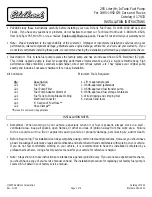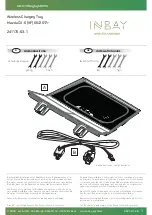
SAFETY
93
(Continued)
Driver And Passenger Front Air Bag Features
The Advanced Front Air Bag system has multi
-
stage driver and front passenger air bags. This
system provides output appropriate to the
severity and type of collision as determined by
the Occupant Restraint Controller (ORC), which
may receive information from the front impact
sensors (if equipped) or other system compo
-
nents.
The first stage inflator is triggered immediately
during an impact that requires air bag deploy
-
ment. A low energy output is used in less severe
collisions. A higher energy output is used for
more severe collisions.
This vehicle may be equipped with a driver and/
or front passenger seat belt buckle switch that
detects whether the driver or front passenger
seat belt is buckled. The seat belt buckle switch
may adjust the inflation rate of the Advanced
Front Air Bags.
This vehicle may be equipped with driver and/or
front passenger seat track position sensors that
may adjust the inflation rate of the Advanced
Front Air Bags based upon seat position.
Front Air Bag Operation
Front Air Bags are designed to provide addi
-
tional protection by supplementing the seat
belts. Front air bags are not expected to reduce
the risk of injury in rear, side, or rollover colli
-
sions. The front air bags will not deploy in all
frontal collisions, including some that may
produce substantial vehicle damage — for
example, some pole collisions, truck under
-
rides, and angle offset collisions.
Never place a rear-facing child restraint
in front of an air bag. A deploying
passenger front air bag can cause death
or serious injury to a child 12 years or
younger, including a child in a rear-facing
child restraint.
Never install a rear-facing child restraint
in the front seat of a vehicle. Only use a
rear-facing child restraint in the rear seat.
If the vehicle does not have a rear seat, do
not transport a rear-facing child restraint
in that vehicle.
WARNING!
(Continued)
WARNING!
No objects should be placed over or near the
air bag on the instrument panel or steering
wheel because any such objects could cause
harm if the vehicle is in a collision severe
enough to cause the air bag to inflate.
Do not put anything on or around the air bag
covers or attempt to open them manually.
You may damage the air bags and you could
be injured because the air bags may no
longer be functional. The protective covers
for the air bag cushions are designed to open
only when the air bags are inflating.
Relying on the air bags alone could lead to
more severe injuries in a collision. The air
bags work with your seat belt to restrain you
properly. In some collisions, air bags won’t
deploy at all. Always wear your seat belts
even though you have air bags.
WARNING!
(Continued)
4
20_BG_OM_EN_US_t.book Page 93
Summary of Contents for 500L 2020
Page 151: ...IN CASE OF EMERGENCY 149 Fuse Panel Cavity Locations 6 20_BG_OM_EN_US_t book Page 149...
Page 193: ...SERVICING AND MAINTENANCE 191 7 20_BG_OM_EN_US_t book Page 191...
Page 281: ......
Page 282: ......















































